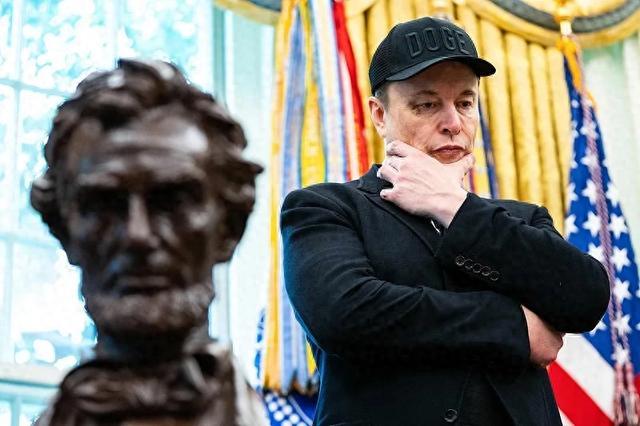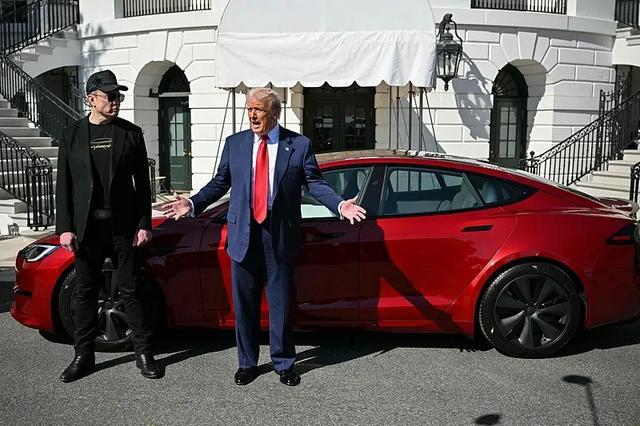


On July 1, 2025, after the Senate formed a 50:50 deadlock on the “Bigger is Better Act,” Vice President Mike Pence secured victory with one vote. Trump won a significant legislative triumph.
As Trump’s campaign’s most significant contributor, Elon Musk became the biggest loser in the “Bigger is Better Act.” The “Trump-Musk alliance” completely collapsed, and Musk fiercely criticized the “Bigger is Better Act” for several days in a row, even threatening to deprive lawmakers supporting the bill of their seats and even form an “American Party,” disrupting the existing political landscape and power dynamics in the United States.
This dramatic shift from allies to adversaries was not due to impulsive actions but stemmed from long-standing political and economic cracks that eventually erupted.
On May 30, at the Oval Office in the White House, Musk attended a press conference held by Trump.
From an economic perspective, Musk’s political investment did not yield the expected returns but instead suffered significant losses.
The “Bigger is Better Act” extended the $7,500 tax credit for electric vehicle purchases set to expire at the end of 2025 to September 30, 2025, while retaining fossil fuel subsidies. Tesla would lose $1.7 billion in profits annually, and its federal subsidy plan for expanding the nation’s charging network would be cut in half. Moreover, the large deficit expansion in the “Bigger is Better Act” erased DOGE’s (Department of Government Efficiency) earlier efforts.
Politically, Trump aligned himself with the establishment, driving Musk out of the “power circle.”
During the government efficiency department reform process, Trump explicitly stated that personnel decisions belonged to cabinet members, effectively supporting the establishment and safeguarding the interests of traditional energy and military industries. Trump also tacitly supported the establishment’s removal of Musk from positions such as Secretary of the Treasury and Director of NASA. For example, he refused to establish an office near the White House for Musk, and his nominations for key positions like the Secretary of the Treasury and Director of NASA were repeatedly rejected by Trump.
During the “Big and Beautiful Act” discussion, Trump issued a warning to lawmakers who leaned towards Musk’s stance; meanwhile, by terminating or reducing contracts, canceling tax incentives, and strengthening government regulation and contract review, Musk’s net worth was reduced by approximately $34 billion. Even during a White House meeting, he openly expressed consideration of expelling Musk to prevent him from exploiting his wealth and political influence to undermine Trump’s political agenda.
Trump, Musk
Trump’s victory intensifies the division within America, with populism further entrenched. The “Big and Beautiful Act” could exacerbate the wealth gap in the United States, reinforce populist sentiments, and give some lower-middle-class white Americans a sense of being deceived, potentially laying the groundwork for a backlash against left-wing politics in the coming decade.
The massive tax cuts mean that the U.S. economy will regain growth momentum in the short term. While wealthy individuals and their businesses save on taxes, asset prices reach new highs, but the source of funding for these tax cuts is the comprehensive increase in tariffs, significant reductions in welfare benefits for the bottom rungs, and ongoing fiscal deficit expansion. This naked redistribution policy, which directly benefits the rich at the expense of the poor, will also harm middle and lower-middle-class whites within the MAGA movement.
The “Big and Beautiful Act” also reveals internal contradictions and fissures within the Republican Party. On one hand, it has sparked discontent among traditional conservative Republicans who favor a smaller government. Three Republican conservative senators voted against the bill, and at least six Republican congressmen opposed it.
On the other hand, right-wing populists like Steve Bannon and Peter Navarro view techno-right wing figures like Musk as a threat to the right-wing populist movement, firmly supporting Trump’s efforts to combat Musk. The “Big and Beautiful Act” will further exacerbate the divide between right-wing populism and techno-right wing.
Trump’s conflict with Musk has also led to the internal division within the tech right-wing, with the future of the tech right likely to split into three directions: Firstly, the defense technology sector represented by risk funds, defense technology companies, and national security agencies. This sector heavily relies on government orders and defense contracts, sharing traditional conservative political ideologies with the right-wing populist camp. Consequently, it will further strengthen its alliance with the right-wing populism.
Secondly, the Silicon Valley establishment represented by the cryptocurrency industry and artificial intelligence. The cryptocurrency industry will become a significant financial backer for the Republican Party, while Emil Michael and David Sacks, among other Silicon Valley establishment figures, have established deep connections with the White House and federal agencies, holding policy-making power in the tech industry, especially in areas such as cryptocurrency and AI. Moreover, the Trump family’s involvement in cryptocurrencies gives the Silicon Valley establishment direct access to the White House.
Thirdly, the Musk faction represented by his companies and industries. As this faction transitions towards an independent political force, “The American Party,” its political influence is likely to undergo a significant qualitative change. However, Musk’s key business areas in the United States—including cryptocurrency, defense, and electric vehicles—will face commercial interests being impacted.
On March 11th, Trump and Musk were seen chatting with the media next to a Tesla car at the White House.
For example, Musk’s plan to issue stablecoins in the United States might be hindered. With the cessation of subsidies for electric vehicles, Tesla may shift its focus from production capacity to European and Shanghai factories, weakening America’s competitive position in the electric vehicle sector. This also presents China with strategic opportunities to further strengthen and consolidate its leadership position in the global clean energy system in the future.
“The Spider Catches the Cicada, but the Hungry Crow is Behind”
Undoubtedly, Vanessa has become the “biggest winner” in the split between the “Greater and Beautiful Act” and the “Texas Alliance.” With her “key vote,” along with her unique political positioning and balancing capabilities, Vanessa’s status within the Republican Party has been steadily rising.
On June 27th, Vice President Vanessa was at the Oval Office of the White House.
Firstly, she acted as a mediator in the conflict between Trump and Musk. Vanessa adopted a delicate balance strategy in the conflict between Trump and Musk, supporting Trump while maintaining political loyalty and soothing and coordinating Musk’s support to prevent a complete split within the Republican Party between tech capital and right-wing populism.
Secondly, Vanessa confirmed her status as a key political figure within the Republican Party. As the financial chairperson of the Republican National Committee, Vanessa became the first vice president to hold this position in history, controlling the party’s power center. She directly controlled the allocation of campaign funds and the nomination mechanism for candidates, which could directly influence the seat competition in the midterm elections in 2026.
Moreover, Vanessa was able to push forward the Republican agenda and maintain unity within the party. During Senate votes, Vanessa successfully persuaded Republican senators such as Murkowski, Holiwell, and Scott to vote in favor. At the same time, Vanessa cast the decisive vote for the “Greater and Beautiful Act,” demonstrating her ability to push critical priorities and making her a key figure in maintaining Republican unity.
Furthermore, Vanessa could replace Musk as a bridge between the Trump administration and the tech right wing. She focused on strengthening fundraising activities aimed at the tech right wing, thus becoming the main contact between the Trump administration and the tech right wing, filling the vacuum left by Musk’s withdrawal from the Trump circle of power.
On October 5th, 2024, in Battelle, Pennsylvania, Musk, Trump, and Vanessa attended an election event.
Authors: Zhai Dongsheng, Dean of the Regional Studies Institute at Renmin University of China; Tao Huan, Assistant Researcher at the Regional Studies Institute at Renmin University of China.